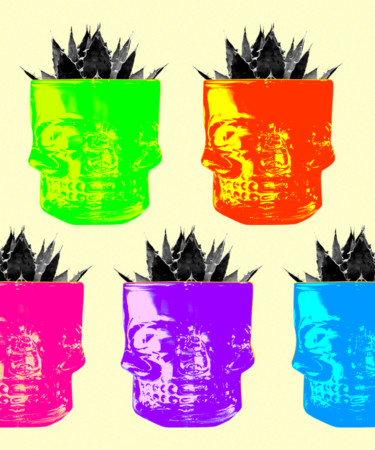
Sipped neat, over ice, or mixed into myriad cocktails, tequila is beloved for its culture, complexity, and versatility. Named after the small town of Tequila where the spirit gained popularity centuries ago, it’s distilled from the piñas of the blue weber agave, a spiky succulent that hails from central Mexico.
According to Mexican law, tequila can only be produced within five Mexican states: Jalisco (where the majority of the spirit is made), Guanajuato, Michoacán, Nayarit, and Tamaulipas. The spirit must also include a minimum of 51 percent blue agave, though most critics agree that superior iterations are made from 100 percent.
From soft and approachable blancos, to rich and complex extra añejos, tequila is an exciting spirit that offers a wide scope in aromas and flavors depending on how much time it spends in wood casks. Tequila is divided into five classifications — blanco, joven, reposado, añejo, and extra añejo — excluding cristalino, a style that while not formally recognized by the Tequila Regulatory Council (TRC), is sure to intrigue any agave fan.
Keep reading to learn all about the five types of tequila, Mexico’s beloved spirit.
The Types Of Tequila
Blanco
Sometimes labeled as “silver” or “plata,” blanco tequila is typically unaged, though some versions of the style can be aged for up to two months. Because most blancos do not spend time aging in oak, connoisseur’s tout it as agave’s most undiluted expression; straight from the earth to the bottle. With a youthful punch and brightness that many aged tequilas lack, blancos can make an excellent accompaniment in mixed drinks and show herbal, mineral, and citrus notes that complement tart cocktails such as the Paloma and Margarita.
Joven
Joven, which means “young” in Spanish, is a blend of blanco with a small amount of aged tequila. Bottles that fall into this category can prove tricky to find, and some jovens that are labeled “gold” are actually “mixtos,” an altogether different product that can include the addition of caramel coloring and flavorings. Be sure to look for 100 percent blue agave on the label when seeking out a bottle in this classification.
Reposado
Reposado tequila spends between two months and up to one year aging in steel or oak — usually American whiskey barrels, though French oak is also utilized. Often labeled simply as “aged,” reposados are beloved for their ability to showcase the subtleties of wood, while still maintaining some of the brightness of the agave. Because reposados are reasonably priced and can stand up to a range of flavors, they tend to be a favorite among bartenders when it comes to cocktails — though they also make excellent sippers.
Añejo
For a tequila to be considered an añejo, it has to spend between one and three years aging in barrels no larger than 600 liters. Meant to be sipped, the additional time in wood results in amber hues and complex flavors of honey, vanilla, and baking spices that some liken to whiskey. Añejos also make an excellent accompaniment in whiskey-centric cocktails, such as the Old Fashioned, but also work perfectly served on the rocks.
Extra Añejo
Decadent and luxurious are just some of the adjectives used to describe tequilas that fall into the extra añejo category. A newer class that was added in 2006, these premium tequilas are barrel-aged for a minimum of three years (also in barrels that cannot exceed 600 liters), but can spend even longer in wood depending on the distiller. Varying in color from deep gold to reddish-brown, extra añejos are smooth, complex, and offer drinkers a unique experience like no other spirit.
Cristalino
If seeking a novel tequila that retains the complexity and richness of aged tequilas but pours as clear as a blanco, then a bottle of cristalino is your best bet. A lesser-known category steadily gaining momentum, cristalino is typically an añejo or extra añejo (though there are reposados in the mix) that have been filtered, sometimes multiple times, with charcoal. The style, invented by Don Julio in 2011 to celebrate his 70th birthday, has seen a surge in offerings over the past several years.
FAQ
What’s So Special About Blue Agave?
Blue agave is a succulent found only in central Mexico, making it a highly-coveted ingredient. Premium tequilas contain 100 percent blue agave, but any spirit must contain at least 51 percent to be classified as tequila.
What Is Mixto Tequila?
Mixto tequila is made with caramel coloring, artificial flavorings and other additives, and is considered less desirable relative to 100 percent blue agave.
What Type Of Tequila Is Meant For Sipping?
Añejo is especially designated for sipping, but reposado also works well when enjoyed by itself.
